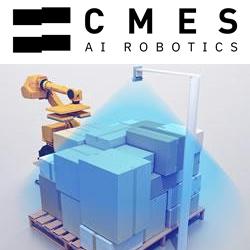Noam Chomsky on Where Artificial Intelligence Went Wrong
ST Robotics Offers 11-Axis Tandem Robot System for under $20,000
The Inebriator
Palm Sized Robot Dragonfly Up On Kickstarter-like Indiegogo
Wired Editor Chris Anderson Leaves To Run 3D Robotics/DIY Drones
New DARPA's Pet-Proto Video
Last Nights Robot Hall of Fame Inducts NAO, PackBot, BigDog and WALL-E
TurtleBot 2 Available For Preorder
A Robotic Wheelchair Able To Climb Steps
IROS 2012 Videos
IEEE/RSJ International Conference on Intelligent Robots and Systems
Espresso Book Machine
Human Support Robot From Toyota
Stack Exchange Teams Up With US Patent Office To Crowd Source Prior Art
Rethink Robotics releases Baxter, its Manufacturing robot
Records 1531 to 1545 of 1671
First | Previous | Next | Last
Featured Product

CMES - AI-Powered 3D Robot Vision
Robotics and Automation - Featured Company

